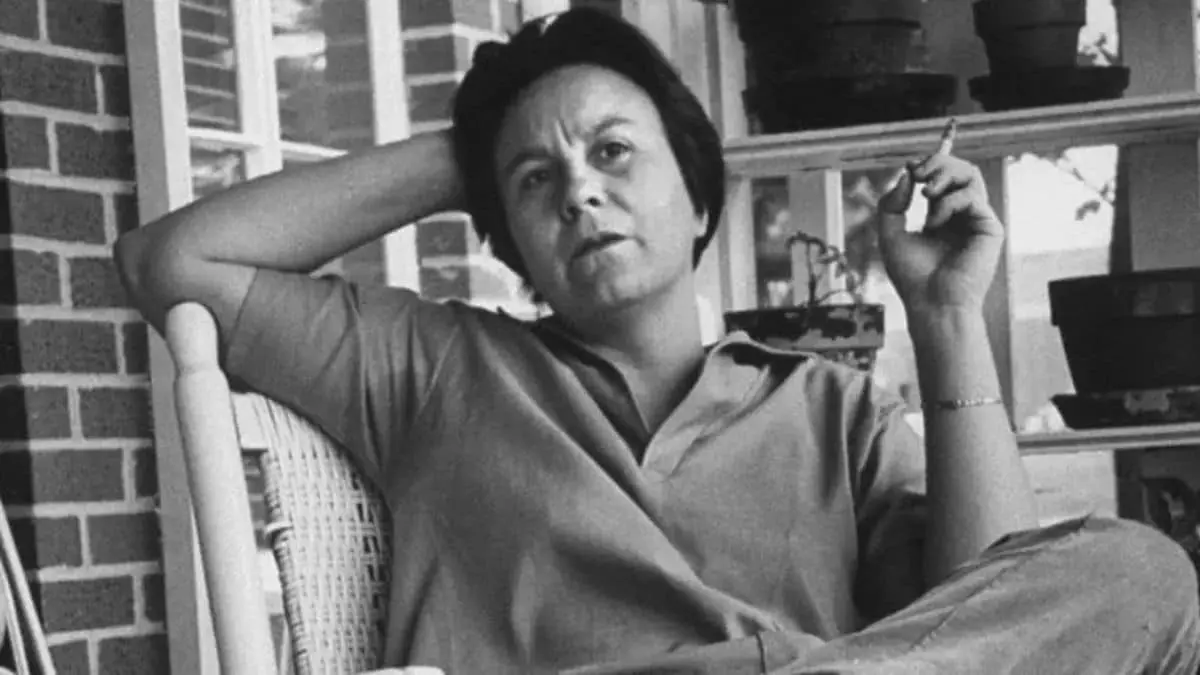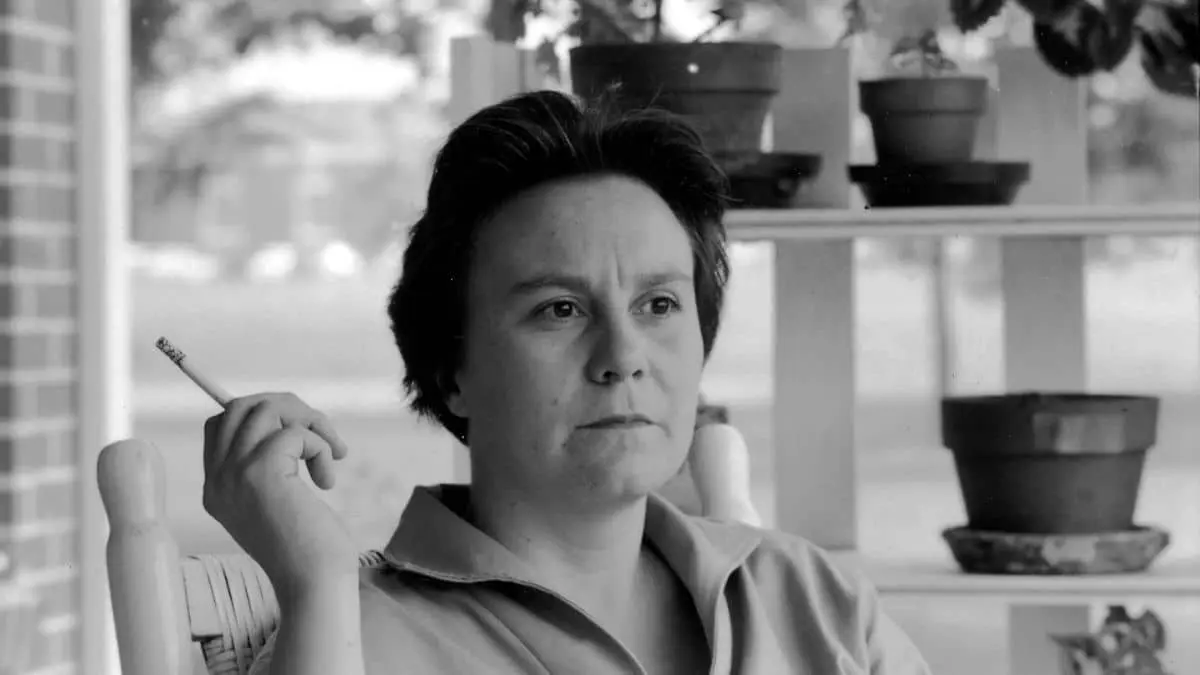Harper Lee, born as Nelle Harper Lee on April 28, 1926, in Monroeville, Alabama, is an emblematic figure in American literature. With a pen that echoed the conscience of a nation, Lee crafted one of the most widely read and influential novels of the 20th century, “To Kill a Mockingbird.” A tale of racial injustice, moral growth, and the innocence of childhood, this timeless novel transcended geographical and cultural boundaries, resonating with readers across the globe. Though notoriously private and selective in her public engagements, Harper Lee’s work continues to be a beacon of literary mastery and ethical insight. This is Harper Lee Biography and we will be discussing about her life, books, and fascinating facts about this reclusive writer who left an indelible mark not only on literature but also on the social fabric of her time.
Early Life and Education
The youngest of four children, Harper Lee grew up in a close-knit family that nurtured her love for literature. Her father, Amasa Coleman Lee, was a lawyer and newspaper editor whose moral compass and social stance significantly influenced Harper’s literary perspective.
Lee’s childhood was also enriched by her friendship with another future writer, Truman Capote, who lived nearby. Together, they nurtured their literary ambitions, exploring their surroundings and crafting stories that reflected their youthful curiosity.
Harper Lee attended the local schools in Monroeville before enrolling at Huntingdon College in Montgomery, Alabama. A determined student, she later transferred to the University of Alabama in Tuscaloosa, where she studied law. However, Lee’s passion for writing never waned. Her time in college was marked by her involvement in various literary pursuits, including editing the campus newspaper and contributing to the university’s humor magazine.
In the 1940s, Lee made a courageous decision to pursue her literary dreams, leaving law school without graduating. She moved to New York City, immersing herself in a vibrant literary scene that would eventually pave the way for her monumental success.
The roots of Harper Lee’s life and education in the South, her strong familial bonds, and her unwavering pursuit of literary excellence would all come together to shape her writing. These early experiences laid the groundwork for her exploration of themes like racial inequality, human integrity, and the enduring values of empathy and compassion that would define her legacy as a writer.
Career and Major Works
Harper Lee’s literary career was defined by brilliance and brevity, marked primarily by her debut novel, “To Kill a Mockingbird.” Published in 1960, the novel instantly became a classic of modern American literature. Set in the fictional town of Maycomb, Alabama, it explores the complexities of racial tension, innocence, and morality through the eyes of young Scout Finch. Lee’s portrayal of Atticus Finch, Scout’s father and a principled lawyer, became a symbol of justice and integrity.
The success of “To Kill a Mockingbird” was meteoric. It won the Pulitzer Prize in 1961 and has since sold over 40 million copies worldwide. Adapted into an equally successful film starring Gregory Peck, the story’s timeless themes have ensured its place in educational curricula across the US, UK, and India.
After this triumph, Lee largely retreated from the public eye, becoming one of the most enigmatic figures in literary history. She assisted her childhood friend Truman Capote in researching his novel “In Cold Blood,” but for decades, it seemed that “To Kill a Mockingbird” would be her only contribution to literature.

That changed in 2015 with the unexpected release of “Go Set a Watchman.” Initially promoted as a sequel, it was later revealed to be an earlier draft of “To Kill a Mockingbird.” The publication stirred controversy due to its portrayal of an older, more bigoted Atticus Finch, and questions surrounding Lee’s consent to publish.
Despite having only two published novels, Harper Lee’s impact on literature is profound. Her exploration of the American South’s social landscape, her insight into human nature, and her articulation of universal truths ensure her place among the literary greats.
Personal Life and Beliefs
Harper Lee was known for her private and unassuming nature. Despite achieving literary fame, she maintained a relatively low profile, often avoiding the public eye and media spotlight. Her friends and family described her as warm, witty, and observant, with a keen sense of justice that echoed throughout her works.
Lee never married, and her closest relationships were with her family and a small circle of friends, including fellow writer Truman Capote. Their childhood friendship grew into a professional collaboration, with Lee assisting Capote in researching his groundbreaking work, “In Cold Blood.”
A deeply principled individual, Lee’s beliefs on civil rights and social justice were clearly mirrored in her writing. Her father’s legal career and commitment to fairness undoubtedly shaped her views on racial inequality and morality. Though not overtly political, she quietly supported the Civil Rights Movement, and her works became a literary embodiment of the fight for equality.
Lee’s later years were marked by health challenges and legal battles over her intellectual property and the decision to publish “Go Set a Watchman.” Despite the controversies, her friends and those who managed her affairs attested to her mental acuity and continued interest in literature and social issues.
In 2016, Harper Lee passed away in her sleep at the age of 89 in her hometown of Monroeville, where she had returned to live after many years in New York. Her life and beliefs remain an inspiring testament to the power of integrity, empathy, and literary excellence.
Controversies and Debates
Harper Lee’s literary career, though impactful, was not without its share of controversies and debates.
- Publication of “Go Set a Watchman”: Perhaps the most significant controversy came with the 2015 publication of “Go Set a Watchman.” Marketed as a sequel to “To Kill a Mockingbird,” it was later revealed to be an early draft. Questions arose regarding Lee’s consent to publish the work, especially considering her advanced age and health. The portrayal of a more bigoted Atticus Finch also sparked debates among readers and critics.
- Authorship of “In Cold Blood”: Lee’s role in assisting Truman Capote with “In Cold Blood” led to speculation that she might have had a more substantial hand in writing the book. While evidence suggests that she only provided research assistance, the debate continues to intrigue literary scholars.
- Legal Battles: Harper Lee was involved in various legal disputes over the years, including copyright issues related to “To Kill a Mockingbird.” Her decision to sue her hometown museum over the use of her name and the novel’s title also made headlines.
- Media Relations: Lee’s reclusive nature and avoidance of media interviews fueled curiosity and speculation about her life. Her decision to grant or deny interviews often became a talking point, adding to her enigmatic persona.
- Academic Interpretations: The interpretation of “To Kill a Mockingbird” in academia has also been a subject of debate. Some critics argue that the novel’s portrayal of racial issues is oversimplified, while others praise it as a seminal work that addresses complex societal themes.
Also Read: James Patterson Biography: Books, Life & Facts



